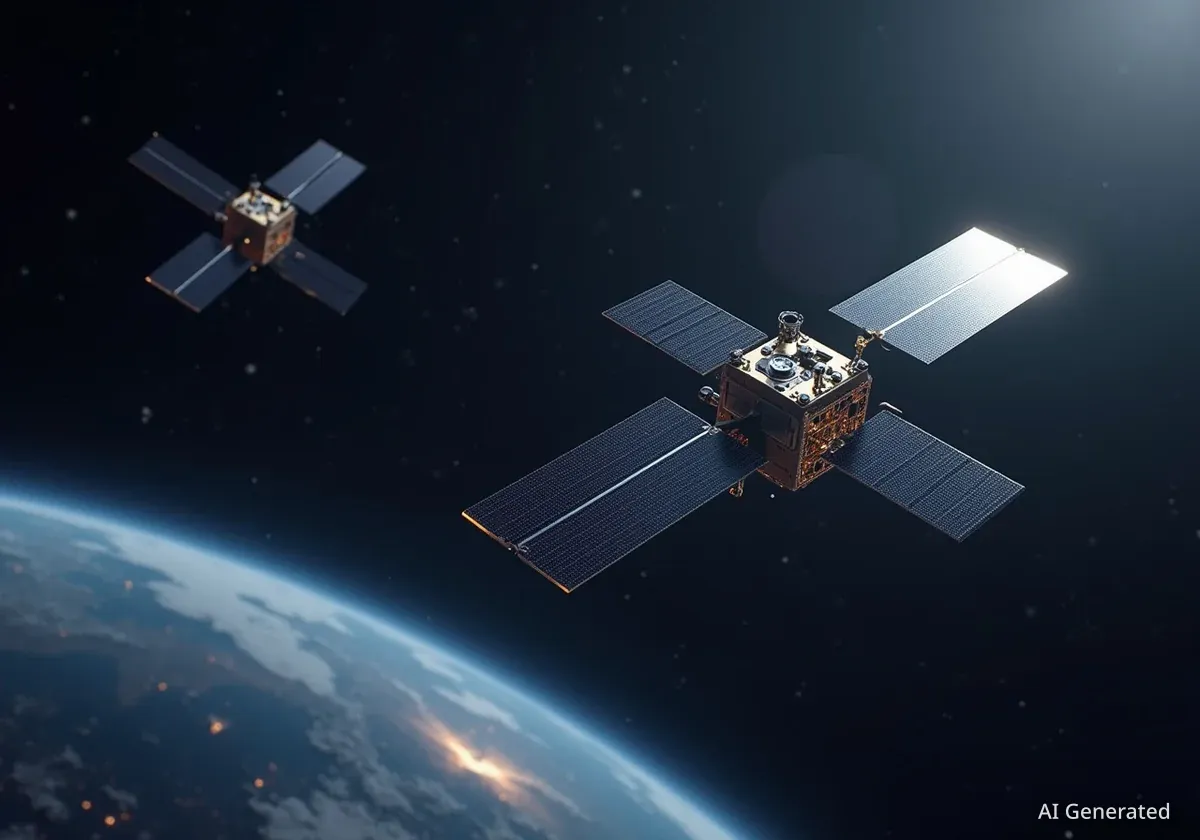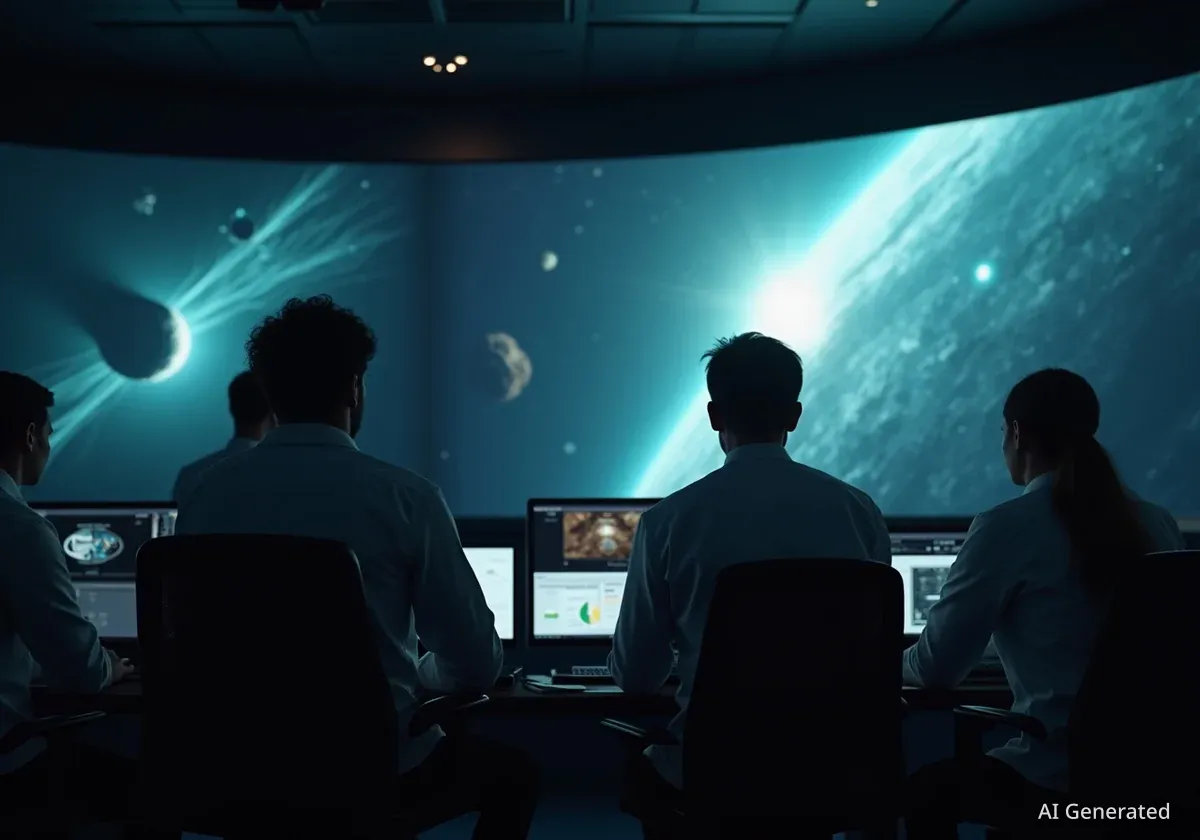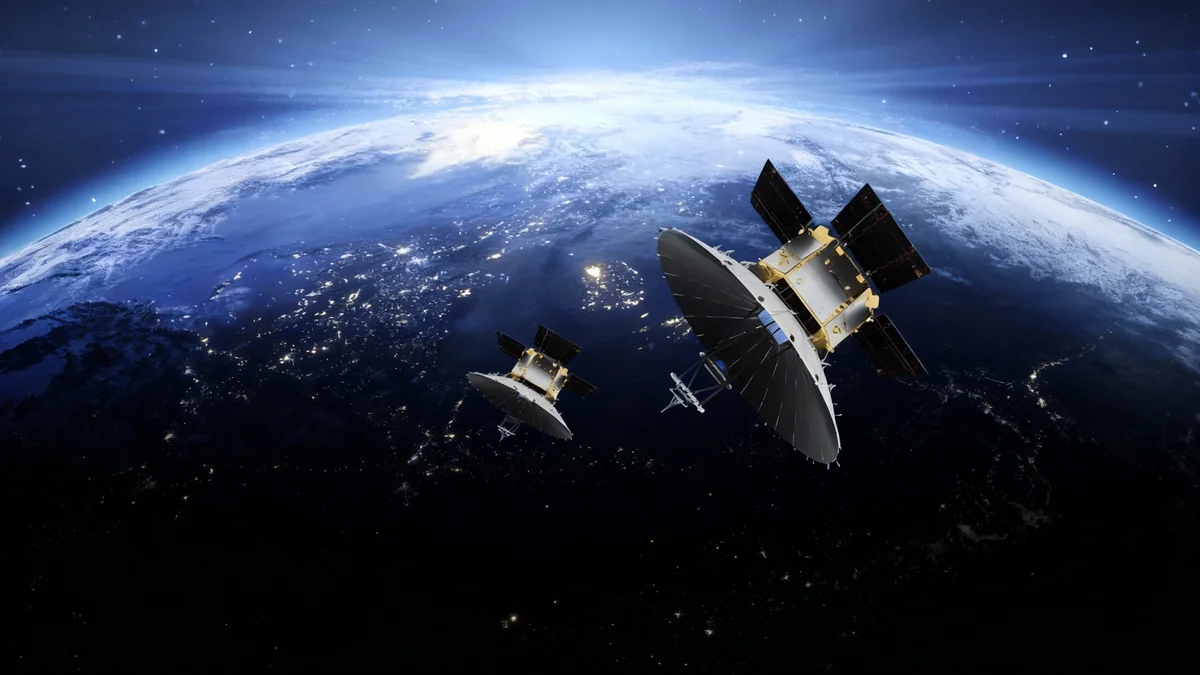The United States Space Force has initiated a new surveillance program, tasking a commercial satellite company with monitoring potential threats in low-Earth orbit. This move signals a significant strategic shift in protecting vital American assets from the growing counterspace capabilities of rival nations.
Under a new contract, the firm Vantor will use its existing constellation of imaging satellites to act as a "neighborhood watch," identifying and tracking hostile or suspicious objects that could endanger U.S. military and intelligence satellites. The program is a direct response to observations of advanced orbital maneuvers by countries like China and Russia.
Key Takeaways
- The U.S. Space Force has contracted commercial firm Vantor to monitor threats to American satellites.
- The program, dubbed a "neighborhood watch," focuses on the increasingly congested low-Earth orbit (LEO).
- Vantor will use its high-resolution commercial imaging satellites for this national security mission.
- This initiative is a response to demonstrated anti-satellite capabilities from nations like China.
A New Set of Eyes in Orbit
The Space Force is adapting its approach to space domain awareness by leveraging the capabilities of the private sector. The agreement with Vantor, formerly known as Maxar Intelligence, repurposes commercial technology for a critical defense mission. The primary goal is to provide persistent monitoring of low-Earth orbit, an area teeming with both civilian and military spacecraft.
This orbital region, extending from approximately 99 to 1,200 miles above the Earth, is essential for communications, navigation, and intelligence gathering. However, its accessibility also makes it a potential battlefield. The new program aims to provide an early warning system against co-orbital threats, where an adversary's satellite could approach and disable or destroy a U.S. asset.
What is Low-Earth Orbit (LEO)?
LEO is the most accessible region of space, making it ideal for satellite constellations like SpaceX's Starlink and for the International Space Station. Its proximity to Earth allows for high-resolution imaging and low-latency communications. However, this accessibility also makes it a prime location for potential conflicts in space.
Vantor will utilize a network of ten of its satellites for the task. Seven of these possess the ability to conduct "space-to-space imagery," meaning they can be pointed away from Earth to observe other objects in orbit rather than just focusing on the ground below.
Responding to Escalating Threats
The decision to launch this surveillance initiative was not made in a vacuum. Defense officials have grown increasingly concerned by the sophisticated space activities of potential adversaries. Specifically, observations of Chinese satellites performing complex maneuvers, described by some as practicing "dogfighting" in space, have raised alarms within the Pentagon.
These exercises demonstrate a clear capability to threaten U.S. satellites with co-orbital systems. For years, American space assets operated with the assumption of safety, but that paradigm has shifted. Both China and Russia have reorganized their military structures over the last decade to prioritize space as a warfighting domain, forcing the U.S. to play catch-up.
High-Resolution Surveillance
Vantor's satellite system is remarkably powerful. It is capable of imaging other objects in LEO with a resolution of less than six inches. The company has already successfully imaged objects as small as 9.5 inches across, demonstrating a precise tracking capability vital for identifying potential threats.
The vulnerability of these satellites cannot be overstated. They form the backbone of America's global military power and economic stability, managing everything from GPS navigation for troops and civilians to secure communications and financial transactions. A successful attack on these networks could have devastating consequences.
The Power of Commercial Innovation
This partnership highlights a broader trend in modern defense: the fusion of military and civilian functions. By tapping into the commercial sector, the Space Force gains access to cutting-edge technology without the lengthy and expensive development cycles typical of government programs. Vantor's goal is to scale its operations to capture 1,000 non-Earth images per day, with many delivered faster than a home-delivered pizza.
The system is also moving toward greater automation, allowing it to track objects across vast volumes of space more efficiently. This ability to quickly identify, track, and analyze potential threats is crucial in the fast-paced environment of orbital mechanics.
This approach reflects a new reality where space situational awareness (SSA) is no longer enough. The military is now focused on space domain awareness (SDA), which treats space not as a void to be monitored, but as an active domain of operations, much like land, sea, and air.
A Strategic Imperative for the Future
While the Vantor contract is a significant tactical step, analysts view it as just the beginning of a necessary transformation. The long-term vision may include what defense theorist Brian Chow described as "bodyguard" satellites—dedicated defensive craft designed to escort and protect high-value American satellite constellations.
This protection will be needed not just in LEO but in medium Earth orbit (MEO) and geosynchronous orbit (GEO) as well, where many of the most critical military and communication satellites operate.
"The satellites overhead are not just luxuries that make life easier... They are the pillars of America’s global military and economic dominance. The moment these assets are lost... you lose the war."
Ultimately, this "neighborhood watch" is a foundational piece of a much larger strategic puzzle. It represents a critical mindset shift within Washington, finally acknowledging space as a frontline of global power competition. The coming years will be decisive in determining whether the United States can adapt quickly enough to maintain its leadership position in this increasingly contested high ground.





